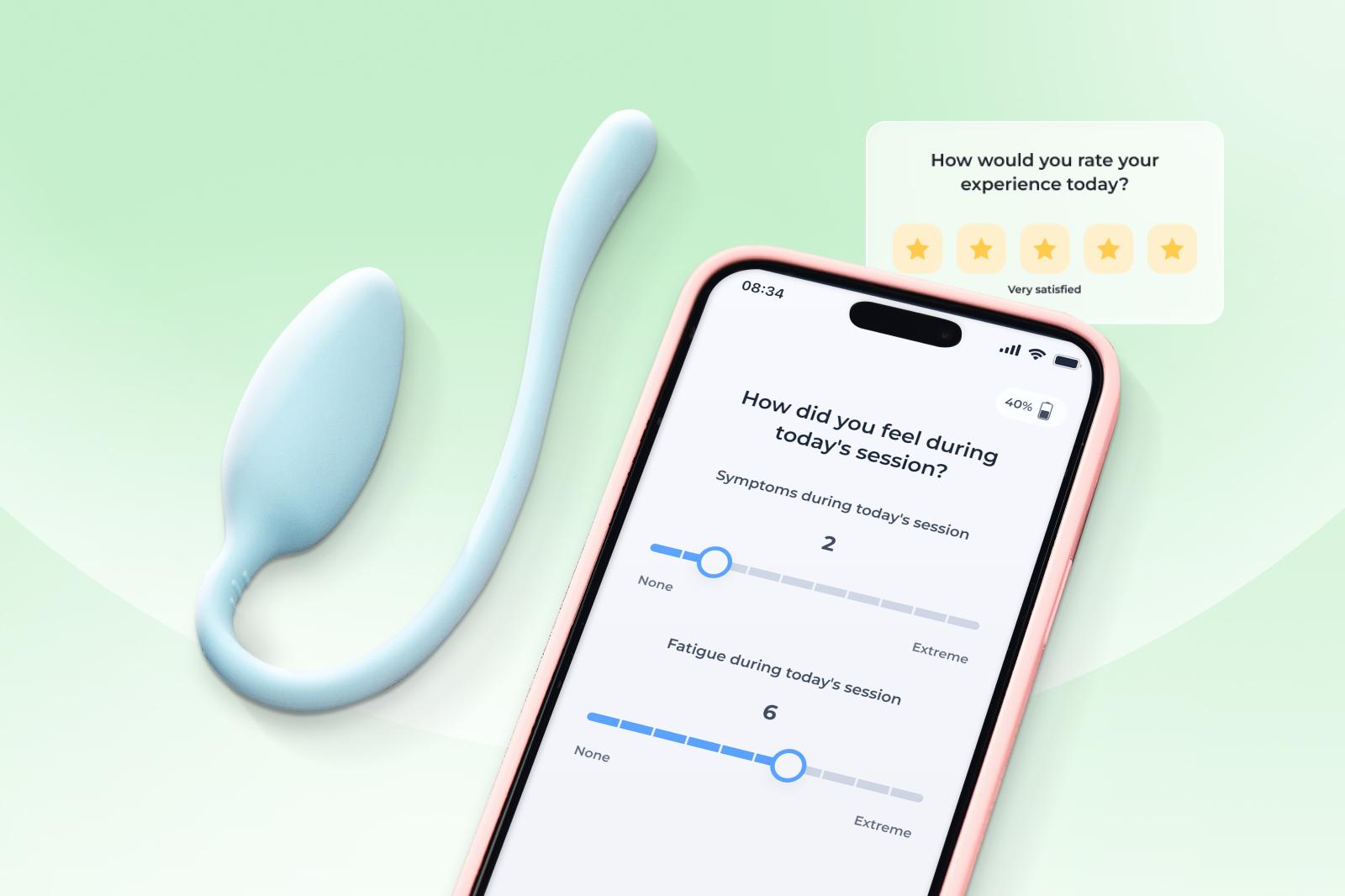Latest articles
Fresh healthcare insights

Explained: The impact of wrist conditions on the workforce
Resham awoke one crisp fall morning with a familiar sensation in her hand: a tingle that ran up from her right wrist to her fingers, a sign that her carpal tunnel syndrome was flaring up. She’d soon be in searing pain that would render her right hand virtually immobile and make her workday excruciating. She knew she had to act fast to stop the pain from progressing. She called in her team of practitioners - an occupational therapist, an osteopath, a massage therapist and a physical therapist. It took a week for her to get an appointment with the osteopath and almost two weeks to get a PT appointment, and both required prescriptions from her primary care physician. By the time she was done with her army of clinicians, she was over $500 out of pocket, with a wrist brace and an exercise program to follow, and she had a long journey ahead before her hands were back in action again. Resham’s story is common. According to the Bureau of Statistics and the Occupational Safety & Health Administration, there are over 900,000 new cases of Carpal Tunnel Syndrome (CTS) reported per year, and it affects up to 25% of the workforce. It’s part of a family of musculoskeletal conditions called ‘work-related musculoskeletal disorders’ (WMSDs) - that includes sprains, strains, and tears that result from strenuous repetitive motions in the workplace.
October 28, 2020 • 5 min read

Sword Health adds wrist therapy to its virtual musculoskeletal care solution
Sword Health to relieve pandemic-induced Carpal Tunnel Syndrome by adding wrist therapy to its virtual musculoskeletal care solution. The innovation will make Sword Health the first sensor-based virtual musculoskeletal care (MSK) provider to treat wrist conditions. Complaints of Carpal Tunnel Syndrome (CTS) and other wrist conditions are on the rise since people bolted from their ergonomically-designed workspaces earlier this year. Up to 25 percent of workers are affected by the condition: 10-20 percent of manual workers and 5-21 percent of information workers.
October 27, 2020 • 3 min read

Strong Mind, Stronger Body: Take a Nature pill
Use this article as a reminder to take care of yourself. Avid readers of Sword's healthcare advice and insights will know that the body and mind are connected. Physical activity is critically linked to mental health. Even gentle movement like walking can release feel-good brain chemicals and help relieve pain. This guide will give you another tool that can help you feel better in both body and mind. It’s based on an exercise from our Strong Mind, Stronger Body program, which is a Cognitive Behavioral Therapy (CBT) program designed by psychiatrists and psychologists to help Sword members develop the mental strength they need to cope with their musculoskeletal conditions.
October 9, 2020 • 3 min read

Outpatient physical therapy: A complete guide
If you’re living with pain, whether from an injury, surgery, or a chronic condition, you may have been told that outpatient physical therapy can help. But what exactly does that mean, and what should you expect if you go this route? Outpatient physical therapy refers to rehabilitation and treatment services delivered at a clinic or facility that you visit regularly, rather than staying overnight as part of a hospital program. It is one of the most common forms of physical therapy for people recovering from musculoskeletal conditions, injuries, or surgeries. Unlike inpatient rehab, where you're admitted to a medical facility for continuous care, outpatient PT allows you to maintain your daily routine while attending scheduled therapy appointments.
October 9, 2020 • 8 min read

Ask a PT: Am I hurt enough for PT?
“I didn’t think it was bad enough to get help.” “I figured it would go away eventually, but it’s been six months now.” “If I don’t sit/run/walk/drive/sleep on my side, I don’t have pain, so I’m just avoiding that.”
October 7, 2020 • 7 min read

Explained: Why surgery is not always the best option
Joel had been struggling with low back pain for years and couldn’t find relief. He went to a chiropractor, but the relief he got was temporary, at best. His family doctor prescribed physical therapy, but he wasn’t doing his exercises between sessions, so it didn’t do much to ease the pain. He was also relying on medication to give him some reprieve. Things got so bad for Joel that he started considering surgery. He didn’t want to go under the knife, but felt he was out of options. If you or someone you love is in the same boat as Joel, you’re not alone. One in every two Americans struggles with musculoskeletal (MSK) pain, and low back pain is the single leading cause of disability worldwide. Costs for treating MSK conditions in the United States total almost $200 billion dollars1 - more money is spent treating MSK than on cancer and mental health combined. The large majority of the cost associated with MSK conditions comes from orthopedic surgeries. The cost of a single spinal surgery, the most common orthopedic surgery in the U.S., averages out at $50,000, and the sobering truth is that between 20 and 40 percent of all spinal surgeries fail.
September 23, 2020 • 7 min read

Explained: The connection between mental health and physical health
I became a neurologist because I’m fascinated with the human brain, and after 11 years in practice, it still never fails to blow my mind (pun definitely intended). There are more connections in the brain than there are stars in the universe, making the brain, not space, the real final frontier (sorry, Star Trek fans!). We neurologists have spent hundreds of years studying the brain and discovering its secrets, and there’s still so much we don’t know. Some experts even suggest that our entire reality is a construction of our brain, which might explain how my wife can remember traffic routes instantly, while I keep looking at the GPS. Maybe she lives in a map and I don’t. One thing we can all agree on, though, is that both the brain and the body play an important role in everything we do and how healthy we feel.
September 2, 2020 • 8 min read

Explained: Why feedback is important in Physical Therapy
You may have seen images of athletes you admire wired up to various high-tech devices as they go through their training sessions. These devices are giving the athlete and their coaches and physical therapists (PTs) biofeedback: critical information on how their body is performing, inside and out, so they can continuously evolve their training program. You may have thought to yourself; why do they need all these fancy devices? Why don’t they just practice in front of a mirror? Whether you’re an athlete trying to perform at your peak or a regular person trying to overcome pain, it’s important that you move your body in just the right way.
August 25, 2020 • 7 min read

Ask a PT: Should I avoid doing things that hurt?
When was the last time you stubbed your toe? I stub mine all the time, and I can tell you exactly what it feels like: an almost overwhelming rush of pain that radiates from my toe up through my entire body, and then fades as quickly as it came on. I’d say I’m pretty good at riding that wave of pain (although you wouldn’t always know it from the stream of curses that comes out of my mouth!) When I’m struggling with back pain, I don’t do so well. I feel the urge to prevent it, and find myself avoiding things that I know will get my back into those positions that are going to make the pain worse. I’ve perfected this weird move for getting out of bed when I have pain – propping my arm up on the pillow and launching myself sideways so I don’t put pressure on the part of my back that hurts. If you have ever suffered from musculoskeletal (MSK) pain, this might sound familiar. You might understand the urge to avoid movements that cause pain or make it worse.
August 18, 2020 • 7 min read

Ask a PT: Does walking really help with pain?
If you’ve ever stood on the sidelines of a sporting event, you’ve likely witnessed many falls, trips and tackles. Whether the players are small children or professional athletes, the advice from the coach may have simply been to “walk it off.” While that is not always the best solution after an acute injury, walking can be a really effective way to manage chronic pain. Motion is lotion. Movement increases blood flow, which brings nutrients to our tissues. It also helps those that don’t have blood flow, like cartilage. Cartilage lines our joints, absorbing impact. It’s surrounded by a liquid which provides it with nutrients, flowing in and out of it like a sponge. Exercise, like walking, causes loading that fills and squeezes that sponge, particularly in the joints of our legs and spine.
August 13, 2020 • 5 min read

Check your Sources: Tips for evaluating clinical trial results
Clinical validation is a crucial part of developing and proving the value of new healthcare solutions, but not all studies are created equal. Clinical trials sometimes get a bad rap, and for good reason - it can be hard to understand their nuances. As a clinician, I’ve been trained to read and understand clinical studies, which makes it easier to distinguish good from bad. Here are a few tips to help you weigh the importance of a study in your decision-making.
August 4, 2020 • 5 min read

Virtual physical therapy: What works and what doesn’t?
Both patients and clinicians are getting more comfortable with telehealth and virtual physical therapy (PT). This is good news for employers and health plans looking to reduce costs without compromising outcomes. I’m Megan Hill, PT, DPT, Director of Clinical Specialists at Sword Health. I hold a Doctor of Physical Therapy degree and have dedicated my career to helping people recover from musculoskeletal conditions. When I tell people that I work for a digital MSK therapy provider, I’m often met with curiosity, and sometimes skepticism, especially from fellow clinicians. Virtual PT uses technology to deliver physical therapy remotely. Instead of traveling to a clinic, members connect through a digital platform that guides their exercises, tracks their movements, and keeps them connected to a licensed Doctor of Physical Therapy.
July 28, 2020 • 9 min read
For employers
Workplace health advice
How Digital Physical Therapy Improves Employee Retention
Did you know that fear of pain can be more disabling than pain itself? Chronic pain and employee turnover prevention are critically linked, but with the right MSK benefits coverage, employers can help their team members recover from pain to increase workplace productivity. Nearly 28% of people in the workplace will take leave for MSK pain over the course of a year. Patients who suffer the two most common conditions of low back and neck pain have an average return to work of 7 days. Overall, MSK conditions are responsible for 44 missed work days each year on average.
October 24, 2025 • 6 min read
How to evaluate and select the best digital MSK vendors
Musculoskeletal (MSK) disorders are one of the most expensive and under-addressed cost centers facing U.S. healthcare providers. MSK disorders affect 1 in 2 Americans and cost over $190 billion per year, more than heart disease, cancer, or mental health conditions. For employers and health plans, MSK claims are often among the top 3 cost drivers. And for members, chronic pain reduces quality of life, drives absenteeism, and often leads to costly downstream interventions. That’s why digital MSK solutions have surged in popularity. The promise is compelling: better access, which drives stronger engagement, delivers better outcomes, and therefore lowers overall healthcare costs.
October 24, 2025 • 6 min read
Reduce MSK costs with more effective digital MSK care plans
You’ve likely seen numerous digital health solutions that promise to lower medical spend. You’ve probably zeroed in on the top conditions with significant digital solutions in the marketplace: musculoskeletal (MSK), mental health, and diabetes. For most companies, prioritizing MSK care over other digital health solutions will drive the biggest benefits for your employees and your bottom line when it comes to savings. Given the multitude of vendors, platforms, and solutions available, prioritization can be a daunting task. How do you choose from among the thousands of digital health tools? What combination of condition focus and solution selection will drive the best outcomes for your population and the biggest return for your business?
October 24, 2025 • 5 min read
Tackling the #1 driver of employers’ health costs: MSK
The phrase ‘musculoskeletal disorder’ may not ring a bell — but the feeling might. The term refers to any type of pain in the muscles or joints, from chronic pain to injuries to post-surgical pain. Many of us have suffered from a musculoskeletal (MSK) issue at some point in our lives. In fact, one in two Americans is struggling with an MSK condition right now. And it’s causing economic ripples, especially in the workplace.
January 20, 2020 • 6 min read
Expert guidance
From the experts: Ask a physical therapist

Ask a PT: when is the best time to do my exercises?
Before I joined Sword Health, I worked in brick-and-mortar clinics. I never worked weekends, and rarely worked past 6 pm. My schedule was great...for me. But for my patients, it was a real challenge. Attending a physical therapy appointment might require leaving work early or slipping out at lunch. Even patients with more flexible schedules would sometimes lament about finding childcare or arranging transportation. A thirty-minute appointment could easily take an hour or even 90 minutes once travel was taken into account. When I was in a clinic, the “best” time for a patient to do their exercises was the time that worked for me, not for them. Sword's virtual model gives our members the power to do their exercises when AND where it's most convenient for them. Now that I work remotely for Sword, I’m able to help our members figure out the best time to do their exercises at home. Now, when my members ask me when they should do their exercises, I tell them - the best time is when you’ll actually do them!
February 11, 2021 • 6 min read

Ask a PT: Does walking really help with pain?
If you’ve ever stood on the sidelines of a sporting event, you’ve likely witnessed many falls, trips and tackles. Whether the players are small children or professional athletes, the advice from the coach may have simply been to “walk it off.” While that is not always the best solution after an acute injury, walking can be a really effective way to manage chronic pain. Motion is lotion. Movement increases blood flow, which brings nutrients to our tissues. It also helps those that don’t have blood flow, like cartilage. Cartilage lines our joints, absorbing impact. It’s surrounded by a liquid which provides it with nutrients, flowing in and out of it like a sponge. Exercise, like walking, causes loading that fills and squeezes that sponge, particularly in the joints of our legs and spine.
August 13, 2020 • 5 min read

Ask a PT: What Is Causing My Shoulder Pain?
When your shoulder hurts, it can be difficult to tell exactly what’s gone wrong. You’ve probably heard of pinched nerves and rotator cuff tears. Perhaps you’ve also heard about shoulders being ‘impinged’ or ‘frozen.’ It’s not easy to keep these various shoulder conditions straight, especially when they all cause similar pain symptoms. The first step towards fixing a problem is identifying it. This article, written by a team of Doctors of Physical Therapy, is designed to help you figure out what’s causing your shoulder pain — so you can begin the process of healing it. We will dive into the five most common causes of shoulder pain and how to differentiate them. Cervical refers to the neck, and radiculopathy is pain that radiates to another body part. Hence, cervical radiculopathy: a pinched nerve in the neck, which can cause radiating pain affecting the shoulder. It occurs when the cervical spine becomes damaged due to sudden injury or degeneration over time, and squeezes or puts pressure on a nearby nerve.
November 1, 2023 • 6 min read
Healthcare contributors
Meet Sword's expert authors

Dr. Vijay Yanamadala, MD, MBA, FAANS
Chief Medical Officer at Sword Health

Dr. Fernando Correia, M.D.
SVP Clinical & Regulatory Affairs at Sword Health

Megan Hill, PT, DPT
Director, Clinical Specialists

Morgan Hollis, MS, RDN
Head of Clinical Strategy, Sword Move

Jennesa Atherton
Head of Clinical Affairs, Sword Bloom

Liz Santo
Senior Clinical Program Manager, Sword Bloom ·





